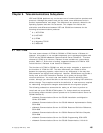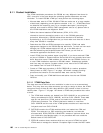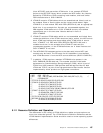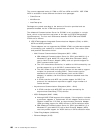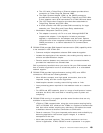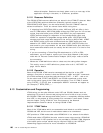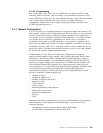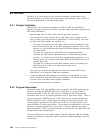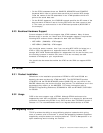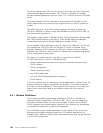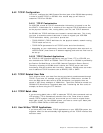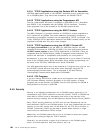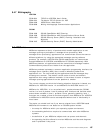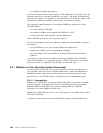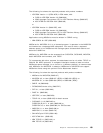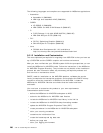
•
On the PCCU statement there are DUMPDS, MDUMPDS and CDUMPDS
keywords which refer to various data sets which will contain NCP dumps.
Code the names of the DD statements in the VTAM procedure which will
point to the actual data sets.
•
On the BUILD statement, the LOADLIB keyword specifies the DD name of the
data set which VTAM will use to find the NCP when the time comes to load
it. The name you code must be in the VTAM start procedure (NCPLOAD in
the example).
9.2.3 Backlevel Hardware Support
Current releases of NCP do not support older 37XX hardware. Many of these
boxes are still in service, so if back level 37XX hardware support is required the
following NCP versions remain orderable for both VSE and OS/390:
•
NCP V4R3.1 (5668-854) - 3725 support
•
NCP V5R4.0 (5668-738) - 3720 support
You should be aware, however, that if you are using NCP V4R2 (or below) on a
3725 or 3720, the upgrade to a supported version will use a lot more NCP
storage. NCP V4R3 introduced support for independent LUs for the first time, and
the resulting increase in module size (even if ILUs are not used) can add
hundreds of Kilobytes to your requirements.
You should also be aware that neither the 3725 nor the 3720 can support APPN
or HPR.
9.3 BTAM
9.3.1 Product Installation
Differences in the installation procedures of BTAM for VSE and OS/390 are
basically the same as those for VTAM and NCP. The VSE BTAM-ES product
(5746-RC5) and the OS/390 BTAM/SP product (5665-279) are very similar in the
MACRO names they use and the function they provide. The differences are in the
parameters they require on the MACROS. For further information refer to
BTAM-ES Programming Reference
, SC38-0293 for VSE and
BTAM/SP
, SC27-0604
for OS/390.
9.3.2 Usage
CICS is the most common user of BTAM. Although BTAM continues to be
supported by both VSE and OS/390, note that there is no support for devices and
controllers accessed using BTAM in any CICS version after CICS/MVS Version 2
Release 1.2. The recommendation here is to migrate these devices to VTAM.
9.4 Migrating TCP/IP
TCP/IP provides the ability to merge differing physical networks while giving
users a common suite of functions. It allows interoperability between equipment
supplied by multiple vendors on multiple platforms. TCP/IP is
the
protocol in an
open networking world including the Internet.
Chapter 9. Telecommunications Subsystems 193



